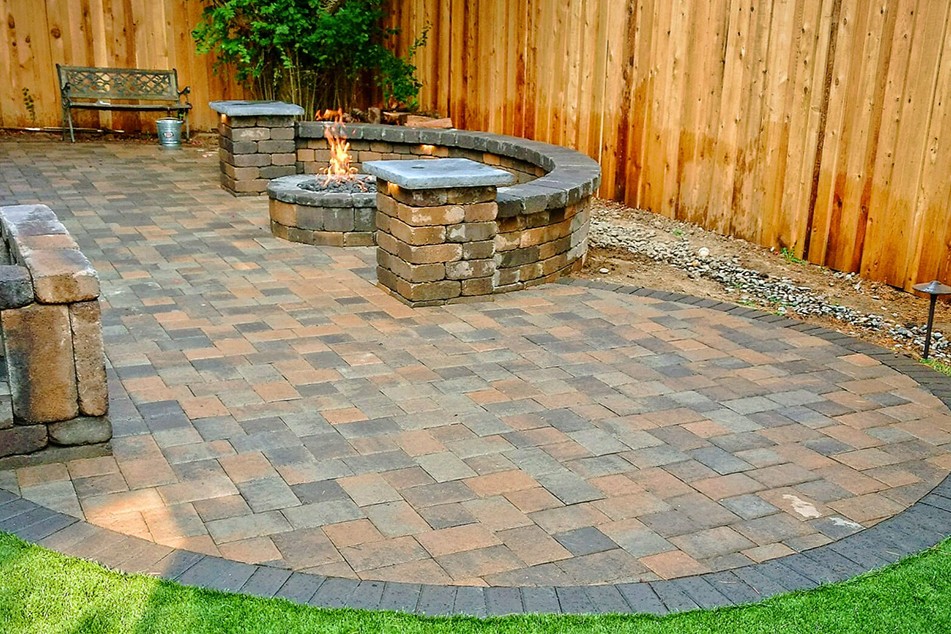
Paver Installation Design: A Comprehensive Guide to Enhance Your Outdoor Spaces
Introduction
Pavers, interlocking concrete stones, have become increasingly popular for outdoor hardscaping projects due to their durability, versatility, and aesthetic appeal. Whether you’re designing a patio, walkway, driveway, or pool deck, the installation design plays a crucial role in the overall functionality and beauty of your outdoor space. This comprehensive guide will provide you with everything you need to know about paver installation design, from choosing the right pavers to creating stunning patterns and layouts.
Choosing the Right Pavers
Material: Pavers come in various materials, including concrete, clay, and natural stone. Concrete pavers are the most common and affordable option, offering a wide range of colors, textures, and shapes. Clay pavers are more durable and resistant to fading, but they are also more expensive. Natural stone pavers, such as granite and limestone, are the most expensive but provide the most luxurious and elegant look.
Size and Shape: Pavers come in a variety of sizes and shapes, from small squares to large rectangles. The size and shape you choose will depend on the desired look and function of your space. Smaller pavers are better for intricate patterns, while larger pavers create a more modern and streamlined look.
Color and Texture: Pavers are available in a wide range of colors and textures. Choose colors and textures that complement the surrounding architecture and landscape. Smooth-textured pavers are easier to clean and maintain, while rough-textured pavers provide a more rustic and slip-resistant surface.
Planning the Layout
Determine the Purpose: Before designing the layout, determine the primary purpose of the space. Is it a patio for entertaining, a walkway for access, or a driveway for parking? The intended use will influence the size, shape, and pattern of the pavers.
Measure the Area: Accurately measure the area where you plan to install the pavers. This will help you determine the amount of materials you need and avoid any costly mistakes.
Create a Sketch: Sketch a rough layout of the space, including the location of the pavers, any borders, and any special features such as curves or circles. This will help you visualize the design and make any necessary adjustments before starting the installation.
Choosing Patterns and Designs
Running Bond: The running bond pattern is the most basic and straightforward pattern. Pavers are laid in straight rows, with each row offset by half a paver from the previous row.
Herringbone: The herringbone pattern creates a classic and elegant look. Pavers are laid in a zigzag pattern, with each paver angled at 45 degrees to the previous one.
Basket Weave: The basket weave pattern is a more intricate and sophisticated pattern. Pavers are laid in a series of interlocking squares or rectangles, creating a woven effect.
Circle and Curves: Pavers can be used to create beautiful circles and curves. Use a string or template to mark the desired shape and then carefully lay the pavers around it.
Borders and Edgings
Paver Borders: Paver borders can be used to define the edges of your space and add a decorative touch. Borders can be made from different-sized or colored pavers, or from a contrasting material such as brick or stone.
Edging: Edging is used to hold the pavers in place and prevent them from shifting or spreading. Edging can be made from metal, plastic, or concrete.
Installation Techniques
Base Preparation: The base preparation is crucial for the longevity and stability of your paver installation. The base should be compacted and level to ensure proper drainage and prevent settling.
Laying the Pavers: Lay the pavers according to the chosen pattern, making sure to keep them level and evenly spaced. Use a rubber mallet to gently tap the pavers into place.
Jointing: Jointing is the process of filling the gaps between the pavers. Use polymeric sand or a mortar mix to fill the joints and lock the pavers together.
Compaction: Once the pavers are laid and jointed, compact the surface using a plate compactor or a hand tamper. Compaction will ensure a firm and stable surface.
Finishing Touches
Sealing: Sealing the pavers will protect them from stains, fading, and moisture damage. Apply a penetrating sealer according to the manufacturer’s instructions.
Cleaning and Maintenance: Regular cleaning and maintenance will keep your paver installation looking its best. Sweep or blow off debris regularly, and use a mild detergent to clean any stains or dirt.
Conclusion
Paver installation design is an essential aspect of creating beautiful and functional outdoor spaces. By choosing the right pavers, planning the layout, selecting patterns and designs, and following proper installation techniques, you can create a paver installation that will enhance the beauty and value of your property for years to come.